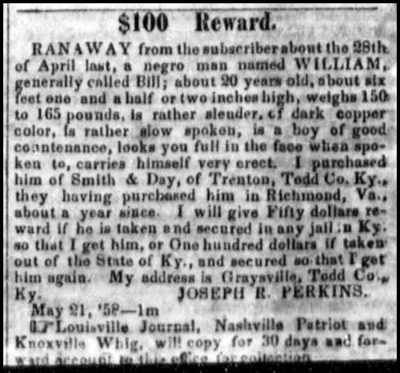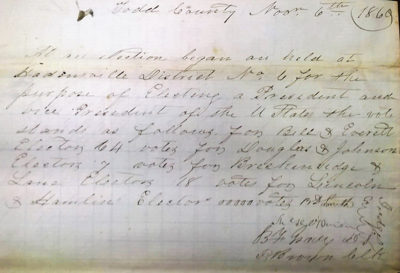

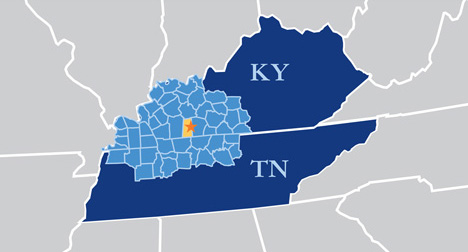
A map of Black Patch tobacco country, showing Todd County at the center.
Suzanne Marshall, Violence in the Black Patch of Kentucky and Tennessee (Columbia: University of Missouri Press, 1994).

Edited detail from a U.S. Census Bureau map of enslaved populations in Southern counties in 1860, highlighting Todd County and Kentucky. The darker the shading in a county, the higher the percentage of the population that was enslaved.
U.S. Government, “Map Showing the Distribution of the Slave Population of the Southern States of the United States Compiled from the Census of 1860” (1861).
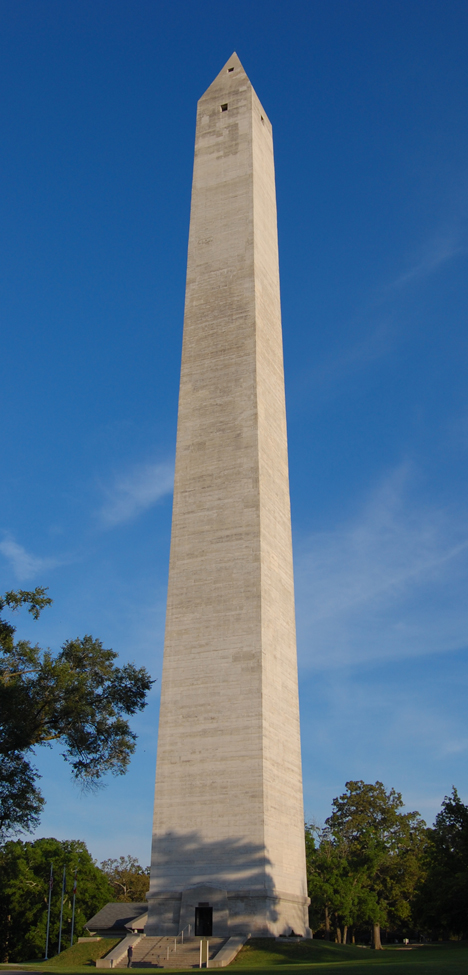
The Jefferson Davis Memorial, a 351-foot concrete obelisk in western Todd County commemorates the birthplace of Jefferson Davis, the first and only president of the Confederate States of America.
Jud McCranie, Creative Commons License CC BY-SA 3.0.
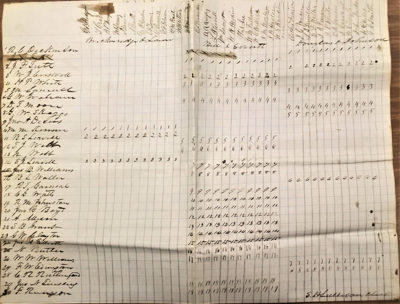
A page of the 1860 presidential election pollbook for Trenton, with columns for Breckinridge and Lane (Southern Democrat), Bell and Everett (Constitutional Union), and Douglas and Johnson (Democrat) electors; but none for Lincoln and Hamlin (Republican) electors.
Todd County:
Conflicted Loyalties and Weak Leadership
Todd County, in south-west Kentucky, had a Southern tobacco plantation economy but was divided between a north with little connection to slavery and a south that was totally dependent on it. Numerically, economically, and politically dominant, the south bordered on the Confederacy. The Democratic Party was powerful, the US Army was invisible, and there were outbreaks of racially motivated violence. However, its Whiggish history and the large African American population meant that there was the potential for the development of a cross racial alliance, largely based on votes of black men, to challenge Democratic Party dominance.
A Southern Plantation Economy
The southern half of Todd County was indistinguishable from the Confederacy with which it shared a border. Its political economy depended on enslaved labor. In 1860, 43 percent of the county’s population was enslaved, the second highest percentage of enslaved people among Kentucky’s 110 counties. There were almost no free black people: just 45 in the whole County (out of a total of 6,681 free people). Todd County had more slaves per capita that all but nine counties in Confederate Tennessee and more than any county in Missouri, another border state.
The slavery of Todd was largely plantation slavery in service of a single commodity: black leaf tobacco. Southern Kentucky was in the center of the famous “Black Patch” of Kentucky and Tennessee, named for its fire-cured pipe tobacco, popular domestically and in Europe. Production relied entirely on enslaved labor. Todd County was only a small county, but the fourth largest producer of tobacco in Kentucky, bringing to market almost five million pounds of black leaf in 1860.
A large proportion of white families were involved in slavery. Of the 1,175 white families in Todd in 1860, 40% (490) of them owned slaves. Most owned five or fewer people: 45% (236) of the individual owners of black people owned 12% (588) of the people enslaved, while 12% (65) of the slaveowners, owned 42% percent (2,041) of the slaves. As in the Deep South, slavery was concentrated in large plantations. Most enslaved people—75% (3,605)—labored on plantations and farms with ten or more enslaved people. Half of all enslaved people worked on plantations with 16 or more slaves. Fourteen percent of the enslaved people in Todd worked on the dozen largest plantations, all with more than forty slaves.
...in the Southern Half of the County
While slave plantations dominated Todd County overall, the county, like the nation, was divided by slavery The further south one travelled in Todd County, the greater the resemblance to the plantation slavery of Deep South. The tobacco plantations in the southern reaches of the county, on the Tennessee line near Allensville, Guthrie, Hadensville, and Trenton, were indistinguishable from the cotton plantations of the Deep South. They were large, in the hundreds of acres, worth tens of thousands of dollars, and producing tens of thousands of pounds of tobacco.
But north of Elkton, the county seat, was an economy of mixed farming with limited enslaved labor. As one moved into the upper reaches of the county—Kirkmansville, Sharon Grove, and Clifty—slavery became less dominant and the population mostly white farmers. For example, in the Clifty district, to the north and east of Elkton, the population was entirely white and did not include a single slaveowner. The farms were small, many less than 60 acres and most valued in the hundreds of dollars. The main product was corn. About half the farms produced tobacco, but in relatively small amounts, less than 2000 pounds per year.
The north was not densely populated, with about 2,250 residents in the northern third of the county in 1870 (where Kirkmansville, Sharon Grove, and Clifty are located). Only about 6% of the population in the northern third was black. By contrast, in the southernmost third, taking in Allensville, Guthrie, Hadensville, and Trenton, there were about 5,000 residents, a majority of whom (56%) were black. In the midlands, land use transitions from small farms to large plantations and the county seat, Elkton, dominated the population. In total, over 5,000 people lived in the midlands, 36% of whom were black.
Sympathy for the Confederacy
The plantation economy of the south dominated the county: in terms of population, wealth, economic output, and political power. It also exerted considerable cultural influence. The south was the base of the Democratic Party.
In the south of the count, there were close cultural, and economic, ties to the Confederacy. The 1861 secessionist convention, in which a shadow Confederate government was formed for Kentucky, was in Russellville, just a few miles east and south from Elkton. Bowling Green, 43 miles from Elkton, was selected as the “Confederate capital” of Kentucky. Jefferson Davis, the only president of the Confederacy, was a native of Todd County. His monument, 351 feet tall and modelled on the Washington Monument, stands at his birthplace in Fairview, now a Todd County heritage park.
While Kentucky never actually seceded, Todd County – the southern part at least – was culturally and economically Confederate. The south of the county was the South. Of the white men from Todd who served in the Civil War, survived, and returned to Todd, a third fought for the Confederacy. Almost all these young men were from south Todd and almost all came from slave-owning families.
After enslaved people became free in 1865, Todd County, and especially the midlands area around Fairview and Elkton, became the center of Ku Klux Klan activity in the County. There were at least two outbreaks of Klan violence in Todd County between June 1874 and November 1875 and a lynching in 1880.
A Whig Past, But a Republican Failure
Todd County had been favorable for Whig and pro-Union candidates before the Civil War. The Whig presidential candidate in 1852, General Winfield Scott, won Todd with 61% of the vote. Even in the climactic 1860 presidential election, 60% of Todd County voters declared their vote for the Constitutional Union party (Bell and Everett) and another 14% for the moderate Douglas and Johnson ticket).
But the county did not have a strong abolitionist tradition. In 1860, President Abraham Lincoln’s electors did not appear on the pollbooks for either Trenton or Hadensville. He received only 8 votes across the county. In his certification of the Hadensville precinct results in the pollbook, B. Duke Smith, one of the election judges, sardonically and proudly finished his tally by writing that there were “0000 votes” for the Lincoln and Hamlin electors. And, in the elections in the fall of 1868, Democratic candidates for Governor, Congress and the Presidency drew 93, 88 and 88 percent of the Todd vote.
Political opportunity
With the arrival of black suffrage in April 1870, there was an opportunity for two forces at the opposite end of the county to join and create a new political majority. Newly enfranchised African American men in the south of Todd County in coalition with the non-slaveholding white men in the northern reaches of the county may have posed a threat to the Democratic Party’s dominance. That threat never materialized, and Todd County remained firmly in Democratic hands.
TODD COUNTY, 1865 Enslaved People and their Owners from the Tax List
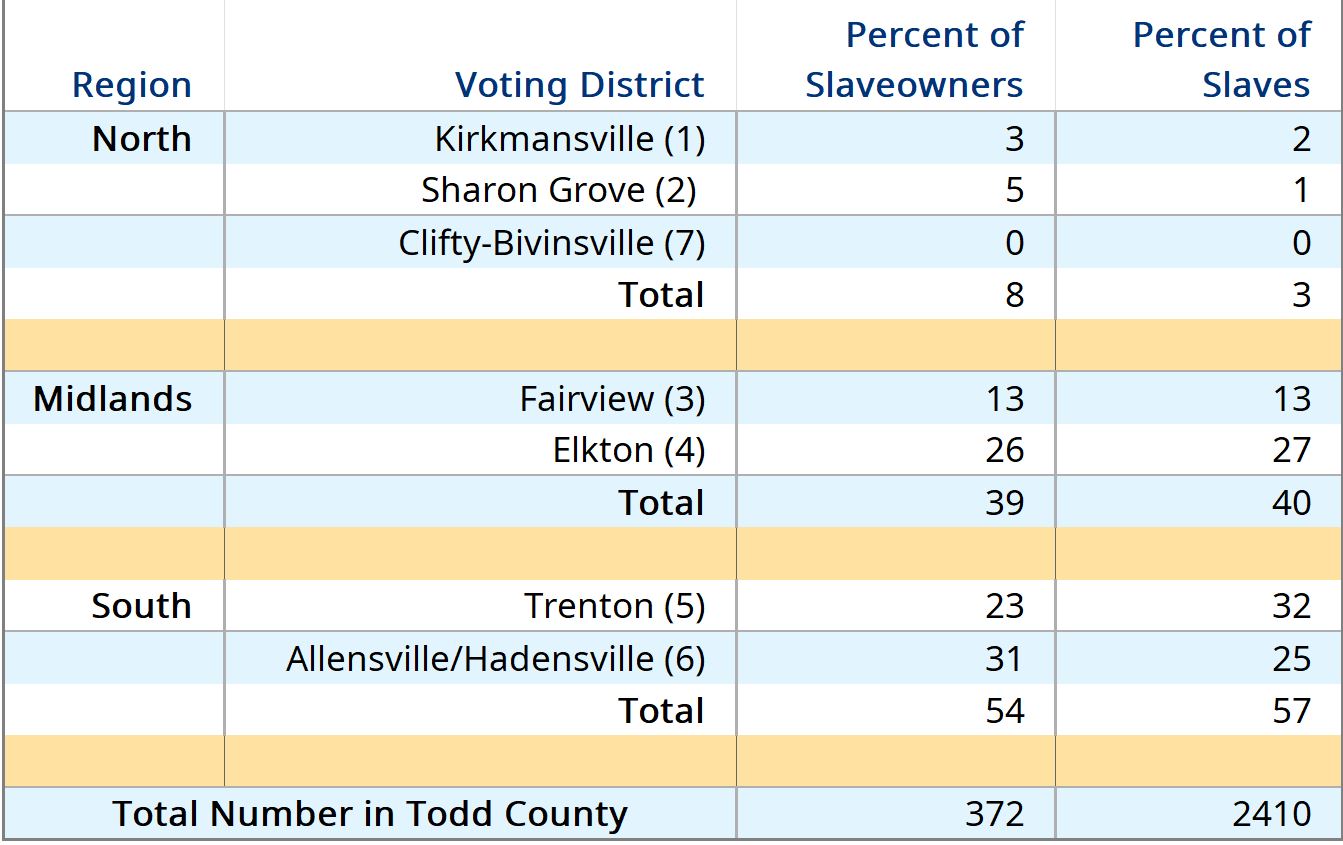
Todd County’s last tax list, detailing the number of enslaved people and their owners, was completed on May 8, 1865, a month after Lee’s surrender at Appomattox. It shows that slavery was concentrated in the southern parts of the county.
TODD COUNTY, 1870 Population by Race, 1870 U.S. Census
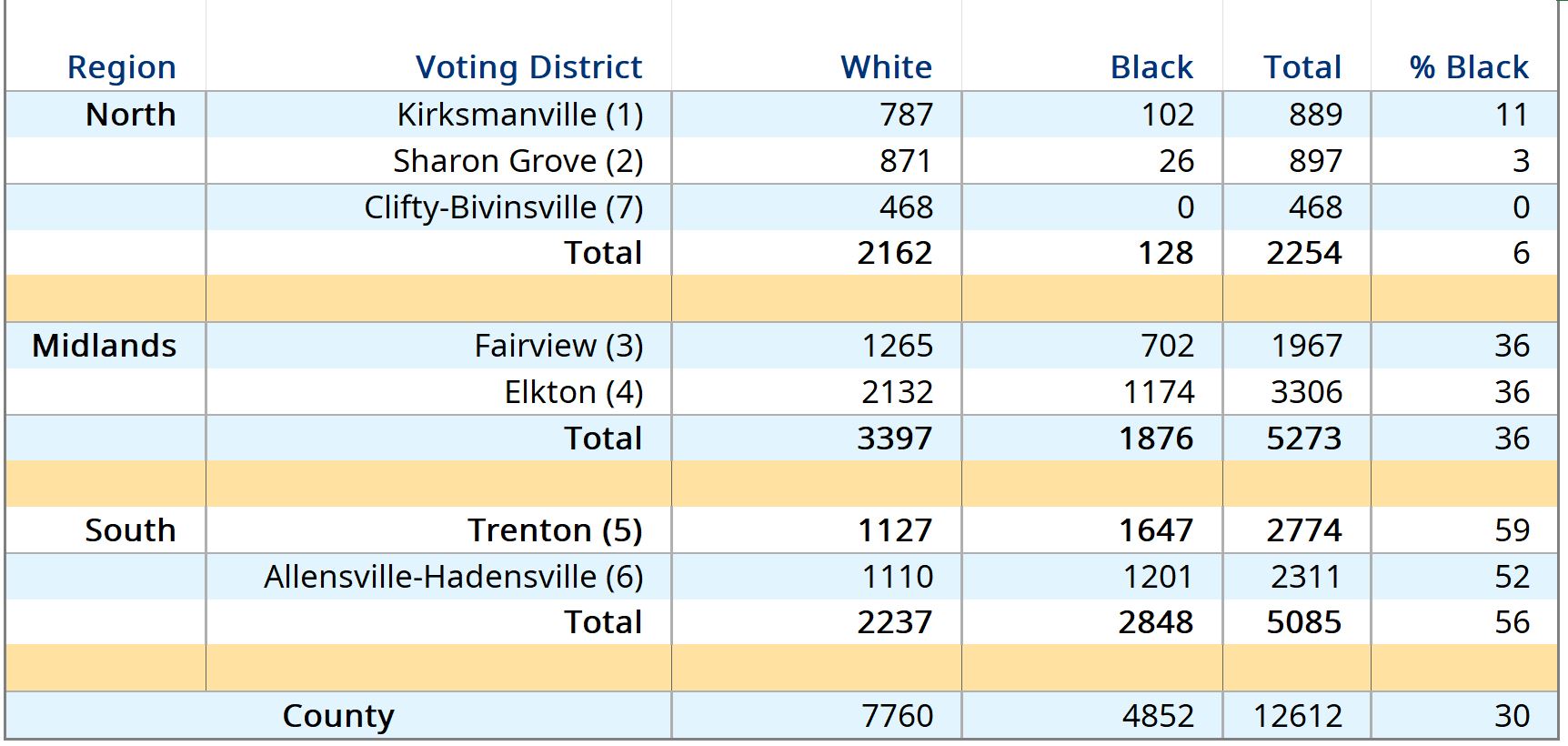
Populations count by voting district in the 1870 U.S. Census, showing the black population centered in the south and midlands of the county.


